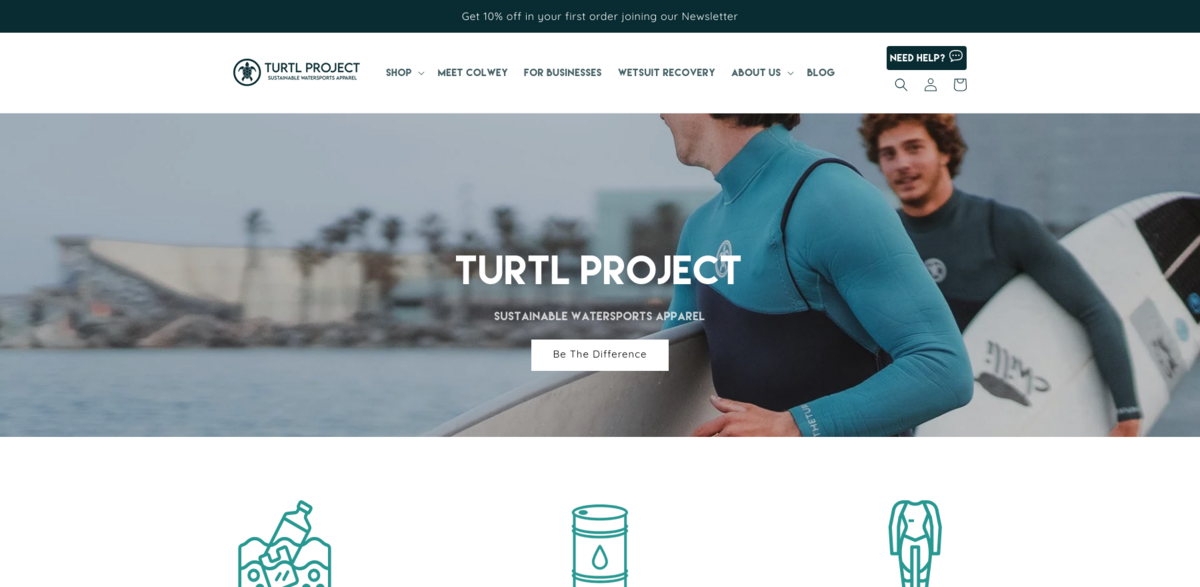What is the Turtl Project?
The Turtl Project is all about sustainable watersports apparel with a mission that truly makes waves—protecting our oceans one wetsuit at a time. It’s not just about gear; it’s a movement aiming to turn the tide against ocean pollution by revolutionizing wetsuit sustainability and rallying global beach cleanups. This project combines passion for the ocean with practical action, creating a community that cares deeply about marine conservation and the future of our blue planet.
The Main Benefit: Cleaner Oceans Through Action
At the heart of the Turtl Project lies a powerful commitment to ocean health, backed by some eye-opening facts:
- Every Turtl wetsuit sold leads to the removal of 2 lbs of marine plastic from oceans and beaches.
- An estimated 17 billion pounds of plastic are dumped into the ocean annually—yikes!
- Beach cleanups are a core part of the mission, directly tackling the plastic crisis suffocating marine life.
- The wetsuit recovery program extends the life of neoprene wetsuits, keeping them out of landfills and reducing harmful chemical release.
- Businesses worldwide and water sports enthusiasts in Barcelona (soon expanding globally) can donate old wetsuits, fueling this circular, sustainable approach.
Why Turtles? Guardians of the Ocean
Sea turtles aren’t just cute creatures; they’re vital players in marine ecosystems. Known as guardians of the ocean, turtles help maintain the health of seagrass beds and coral reefs—both essential habitats for countless marine species. Their presence keeps these underwater environments thriving, which in turn supports the broader oceanic food web. Without turtles, the balance of these ecosystems could tip, leading to far-reaching consequences for marine biodiversity.
Turtles as Keystone Species and Ecosystem Engineers
Turtles hold a pivotal role as keystone species, meaning their impact on the environment is disproportionately large compared to their numbers. By feeding on seagrass, they maintain healthy seagrass beds, which are crucial for carbon sequestration and provide shelter for many marine animals. Think of turtles as natural gardeners of the sea, pruning and nurturing the underwater landscape to keep it vibrant and balanced.
Population Control and Bio-Transporters
Beyond their role in habitat maintenance, turtles also help control the population of their prey, ensuring ecosystems don’t get out of whack. This balance is essential for the health of marine habitats. Plus, turtles act as bio-transporters, moving organisms and nutrients across vast distances. This movement supports the connectivity of marine ecosystems, spreading life and resources where they’re needed most. It’s like they’re the ocean’s own delivery service, keeping everything connected and thriving.
Project Impact: Aligning with Global Goals
- SDG 14: Life Below Water – Protecting marine ecosystems and reducing ocean pollution.
- SDG 12: Responsible Consumption and Production – Promoting sustainable wetsuit use and recycling.
- SDG 13: Climate Action – Supporting carbon sequestration through healthy seagrass beds.
- SDG 15: Life on Land – Engaging in beach cleanups to protect coastal environments.
- SDG 17: Partnerships for the Goals – Collaborating globally with businesses and communities.
Wetsuit Recovery Program: Closing the Loop
Millions of wetsuits end up in landfills every year, releasing harmful chemicals and adding to the plastic crisis. The Turtl Project’s wetsuit recovery program offers a smart, sustainable solution. By inviting donations of old neoprene wetsuits, especially from water sports enthusiasts in Barcelona (with plans to expand worldwide), the project gives these wetsuits a second life. This circular approach reduces waste, supports ongoing beach cleanups, and fuels ocean conservation efforts. It’s a win-win for the planet and the people who love it.





















